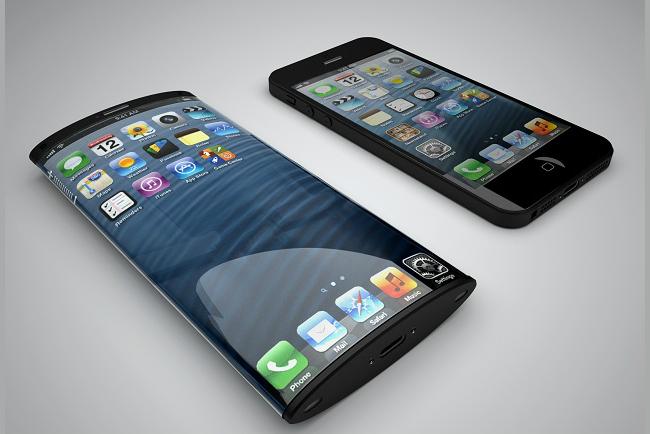
With Apple famous for not giving much … no, let’s say anything … away when it comes to what’s on the drawing board, we can always rely on the good ol’ US Patent and Trademark Office to furnish us with a few pointers from time to time.
The office has recently awarded the Cupertino company with a patent that describes a manufacturing technique capable of producing a high-quality “curved touch sensor.”
The process involves “depositing and patterning a conductive thin film on a flexible substrate to form at least one touch sensor pattern, while the flexible substrate is in a flat state.” The application of high-heat enables the substrate to be worked into a curve without the risk of deformation.
Apple Insider, which spotted the patent award, noted that some existing curved-screen technology doesn’t produce a true curved touch surface – merely placing curved glass onto the substrate – and could result in a less-than-perfect touch experience for the user because of the varying distance between the glass and the touch-sensitive component beneath it.
Apple’s patented method is designed to keep touch sensitivity at high levels by keeping the distance between the cover glass and touch-sensitive component constant.
The idea that the iPhone maker is working on developing curved-display technology for some of its products won’t come as a surprise to most observers – earlier this year another Apple patent featuring a “wrap-around” display surfaced, while a report just last month suggested it was developing large-screen mobile devices with curved, pressure-sensitive screens. In addition, the patent awarded this week was filed some considerable time ago, in 2010.
Handsets with curved displays certainly appear to be something of a trend just now, with such devices already rolling off Samsung and LG production lines, though such technology could also just as easily be applied to other products such as Apple’s rumored iWatch.
Of course, Apple’s research and development facility is well known to test a plethora of products and designs before deciding whether to bring any of them to market, so there’s a good chance that even Tim Cook currently has no idea whether curved-screen devices from Apple are on the way.
[Image: TheCodeWord]
Editors' Recommendations
- UPS worker accused of nabbing $1.3M worth of iPhones and other Apple gear
- Two of Apple’s most expensive Apple Watch straps are up to 63% off
- Why I finally gave up and embraced Apple’s walled garden
- Your next Apple Pencil could select colors from real-world objects
- iPhone 14 Pro: how to make your always-on screen black


